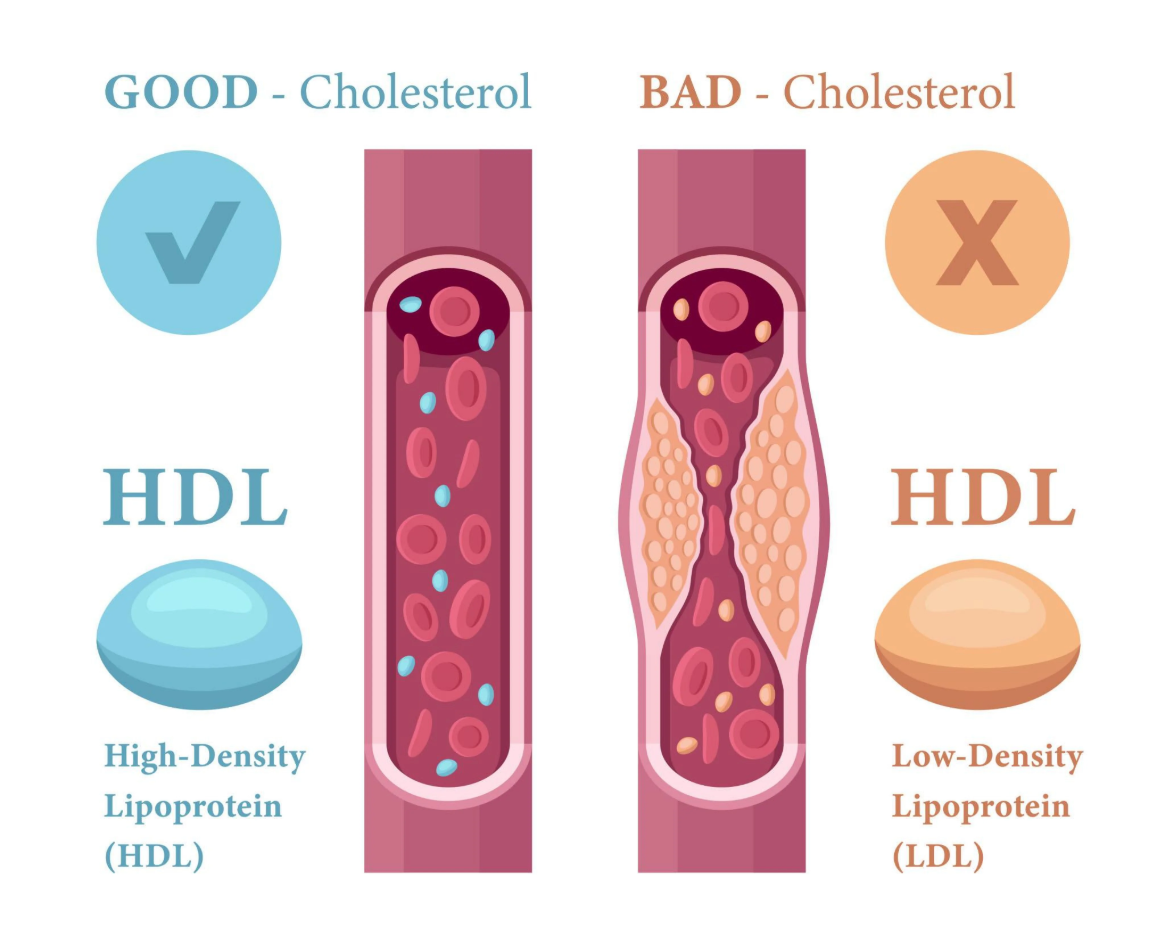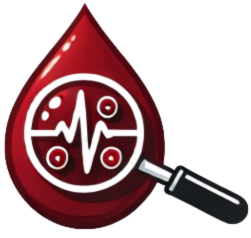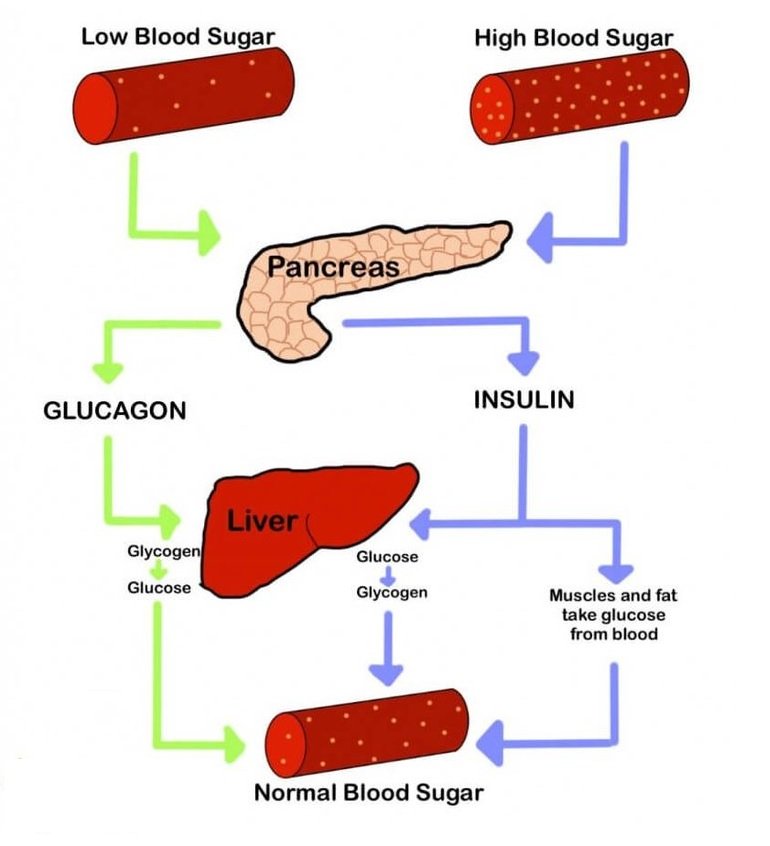Why Understanding Your Blood Cholesterol Matters?
Did you know that heart disease is the leading cause of death worldwide, with over 17.9 million people dying each year?💡
Whether you enjoy salmon for dinner, sprinkle flaxseeds on your breakfast, or take fish oil supplements, omega-3 fatty acids can have a positive effect on your blood lipid profile. In particular, it affects your heart health both immediately and in the long term.
But what exactly are omega-3 fatty acids?
How can your blood lipid tests provide insights into your health?
Your blood lipid profile, also known as a lipid panel or cholesterol test, is not just a collection of numbers; it’s a window into your cardiovascular health.
In this article, we’ll break down:
- How omega-3 fatty acids affect your body
- What your blood lipid test results mean
- Simple steps to improve your lipid profile through omega-3s
What Are Omega-3 Fatty Acids?
Omega-3 fatty acids are a type of polyunsaturated fat. Omega-3s are essential fats— meaning, your body cannot make them, so you’ve got to obtain them through diet or supplements!

There are three main types of omega-3 fatty acids:
- EPA (Eicosapentaenoic Acid): Found mainly in fish oil. They help reduce inflammation.
- DHA (Docosahexaenoic Acid): Important for brain and heart health, also found mainly in marine sources.
- ALA (Alpha-Linolenic Acid): Found in plant sources like flaxseed and walnuts; your body converts a small amount of ALA into EPA and DHA.
EPA and DHA are found primarily via marine sources, i.e. oily fish, seafood and algae. They are more biologically active when compared to ALA.
ALA must be converted in the body to EPA and DHA—a process that isn’t very efficient in humans.
Your body is quite remarkable❤ The omega-3 it receives becomes incorporated into your cell membranes , influencing how cells interact and function💡
If you think of a cell as a house, then a cell membrane is made up of things comparable to: the drainage system, chimney, plug sockets, boilers and even the front door. These are some of the things that allow a house to interact with the environment.
Omega-3s help maintain the flexibility of blood vessels, reduce inflammation, and influence how your body processes fats in the bloodstream. They play crucial roles in brain and eye development. They have various mental benefits, including improving cognitive function and mood.

How Omega-3s Affect Your Blood Lipid Profile
Your blood lipid profile measures cholesterol and triglycerides—two key markers of heart health. Omega-3s influence these markers in several beneficial ways:
Lowering Triglyceride Levels
Triglycerides are a type of fat stored in your body. High levels can increase your risk of heart disease.
Omega-3s, especially EPA, have been shown to reduce triglyceride levels by up to 25–30% by:
- Decreasing triglyceride production in the liver
- Promoting the breakdown of triglycerides in the bloodstream
A 2023 comprehensive meta-analysis of 90 randomised controlled trials with over 72,000 participants found that omega-3 fatty acid intake has a near-linear relationship with triglyceride reduction, particularly at doses above 2g per day.
Effects on HDL Cholesterol
HDL cholesterol (often called “good” cholesterol) helps remove excess cholesterol from your arteries.
Omega-3s can slightly increase HDL levels, contributing to better heart health. While this effect is modest compared to their impact on triglycerides, even small improvements in HDL can be beneficial, especially when combined with other heart-healthy practices.
Impact on LDL Cholesterol
The relationship between omega-3s and LDL cholesterol (often called “bad” cholesterol) is more complex:
- Omega-3s don’t significantly lower total LDL cholesterol levels
- However, they improve LDL particle size and quality
- Larger LDL particles are less harmful than smaller, dense ones
Research shows that while total LDL numbers might not change dramatically with omega-3 supplementation, the quality of LDL particles improves, making them less likely to contribute to blood vessel plaque buildup.
Reducing Inflammation
Chronic inflammation can worsen blood vessel damage. Omega-3s help lower inflammation markers like C-reactive protein (CRP) and Erythrocyte Sedimentation Rate (ESR), protecting your cardiovascular system.

What Is a Blood Lipid Profile Test?
A blood lipid profile (also called a lipid panel) evaluates your risk for heart disease by measuring several types of fats in your blood. It’s often used to:
- Assess cardiovascular risk
- Monitor the effectiveness of lifestyle changes or medications
- Guide treatment decisions for heart health
Types of Blood Lipid Tests
Total Cholesterol:
This is sometimes written as ‘serum cholesterol’ or ‘TC’ and refers to your overall level of cholesterol.
- Normal range: below 5.0 mmol/L (below 193 mg/dL)

LDL Cholesterol (“Bad” Cholesterol):
LDL can build up on the walls of your arteries, increasing your risk of heart disease.
- Normal range: below 3.0 mmol/L (below 116 mg/dL)
HDL Cholesterol (“Good” Cholesterol):
HDL helps remove excess cholesterol from your arteries.
- Normal range: above 1.0 mmol/L (above 39 mg/dL) for men
- Normal range: above 1.2 mmol/L (above 46 mg/dL) for women
- Levels around 1.4 mmol/L are thought to offer the best protection
- HDL <1.0 mmol/L is associated with increased cardiovascular risk
Non-HDL Cholesterol:
This is your total cholesterol minus your HDL cholesterol. It includes all the “bad” cholesterol types.
- Normal range: below 2.5 mmol/L (below 98 mg/dL)
- Non-HDL cholesterol > 2.5 mmol/L is associated with increased cardiovascular risk
Triglycerides:
These are another type of fat in your blood that can increase heart disease risk.
- Normal range: below 1.7 mmol/L (below 150 mg/dL)
- Fasting triglycerides > 1.7 mmol/L are associated with increased cardiovascular risk
Regular blood tests are essential for tracking these values and understanding how lifestyle changes—such as increased omega-3 intake and exercise—impact your health💪💛
It’s important to listen to the non-verbal signals your body give, if something doesn’t feel right, there’s a good chance something isn’t. Get involved, be invested, and don’t be afraid to seek help!
Foods High in Omega-3s
Incorporating omega-3-rich foods into your diet is easier than you might think. Here are some readily available options:
Marine Sources (EPA and DHA)
- Fatty Fish: Salmon, mackerel, sardines, herring, trout, and tuna
- Seafood: Oysters, mussels, and some types of crab
Plant-Based Sources (ALA)
- Seeds: Flaxseeds, chia seeds, and hemp seeds
- Nuts: Walnuts
- Oils: Flaxseed oil, canola oil, and soybean oil
- Leafy Greens: Some dark leafy greens contain small amounts of ALA
Fortified Foods
Some foods are enriched with omega-3s:
- Certain brands of eggs
- Some yogurts and milk alternatives
- Certain breakfast cereals and bread products are fortified with omega-3
Steps to Improve Your Blood Lipid Profile
Here’s how you can take control and enhance your blood lipid profile through omega-3s:
Revamp Your Diet:
- Include two servings of fatty fish per week (about 140g cooked weight per serving)
- Add plant-based omega-3 sources like flaxseeds, chia seeds, or walnuts to meals
- Use oils rich in omega-3s, such as rapeseed oil, for cooking
- Reduce intake of saturated and trans fats, which can raise LDL cholesterol levels
Get Active:
- Aim for at least 150 minutes of moderate exercise per week
- Combine aerobic activities with strength training for maximum benefit
- Regular physical activity works synergistically with omega-3s to improve lipid profiles
Monitor Your Progress:
- Get regular blood tests to track changes in your lipid profile
- Keep a food diary to ensure adequate omega-3 intake
- Be patient—improvements in lipid profiles typically take several weeks to months
Consider Supplements (If Needed):
- If you don’t eat fish, consider an algae-based omega-3 supplement
- Fish oil supplements can provide concentrated doses of EPA and DHA
- Always consult with your healthcare provider before starting supplements, especially if you’re on blood-thinning medications
Consistency is Key🗝
Improving your blood lipid profile through omega-3s isn’t a quick fix—it’s a lifestyle change. Consistency in your diet and exercise routine is essential for seeing and maintaining results. Your body will thank you sooner than you think!
Key Takeaways
- Omega-3 fatty acids significantly improve your blood lipid profile by lowering triglycerides, potentially raising HDL cholesterol, and lowering as well as improving LDL particle quality.
- The most effective omega-3s for heart health (EPA and DHA) are found primarily in fatty fish, while plant sources provide ALA.
- A dose-response relationship exists between omega-3 intake and triglyceride reduction, with higher doses (>2g/day) showing more pronounced effects.
- Regular blood lipid testing is essential for monitoring the impact of dietary changes on your cardiovascular health.
- Combining omega-3-rich foods with regular exercise and an overall heart-healthy diet provides the best results for your lipid profile.
Start now, be it a small change like adding flaxseeds to your breakfast or enjoying salmon for dinner twice a week—it will add up and make for a healthier tomorrow!
Understanding Your Blood Test Results
Blood lipid tests provide valuable insights into your cardiovascular health. Here’s a recap of what different results mean:
| Test | Normal Range (mmol/L) | Normal Range (mg/dL) | What High Levels Indicate |
| Total Cholesterol | < 5.0 | <193 | Increased cardiovascular risk |
| LDL Cholesterol | < 3.0 | <116 | Higher risk of arterial plaque |
| HDL Cholesterol | > 1.0 (men) > 1.2 (women) | > 39 (men) > 46 (women) | Better protection (higher is better) |
| Triglycerides | < 1.7 | < 150 | Increased risk of heart disease |
| Non-HDL Cholesterol | < 4.0 | < 155 | Elevated cardiovascular risk |
How Omega-3s Affect Your Blood Lipid Profile Over Time
Short-term Effects (within weeks):
- Initial reduction in triglyceride levels, often noticeable within 2-4 weeks
- Subtle improvements in inflammation markers
- Minimal changes in cholesterol levels
Intermediate Effects (1-3 months):
- More significant reductions in triglycerides (up to 25-30% with sufficient intake)
- Potential small increases in HDL cholesterol
- Improvements in LDL particle size and quality
- Enhanced endothelial function (the health of blood vessel linings)
Long-term Effects (3+ months):
- Sustained improvements in lipid profile
- Reduced risk of cardiovascular events when combined with other heart-healthy practices
- Potential slowing of atherosclerotic progression (plaque buildup in arteries)
- Cumulative benefits for overall cardiovascular health
What Health Conditions Are You at Risk Of?
Without adequate omega-3s and with poor lipid profiles, you may face increased risk of:
- Coronary heart disease
- Stroke
- Peripheral artery disease
- Metabolic syndrome
- Type 2 diabetes complications
Warning Signs to Watch For:
- Consistently elevated triglycerides despite lifestyle changes
- Low HDL cholesterol that doesn’t respond to exercise
- Family history of premature heart disease
- Existing cardiovascular conditions that aren’t improving with standard care
FAQs
How much omega-3 do I need daily?
While there’s no official recommended daily allowance (RDA) in the UK, aim for at least two 140g servings of oily fish per week. For supplements, approximately 250-500mg combined EPA and DHA daily is often recommended for general health, while higher doses (2-4g) may be suggested for specific conditions like high triglycerides.
Can vegetarians and vegans get enough omega-3s?
Yes, through ALA-rich foods like flaxseeds, chia seeds, and walnuts. However, since conversion of ALA -> EPA and DHA is limited, consider algae-based supplements that provide direct sources of EPA and DHA.
How long before I see changes in my lipid profile?
Triglyceride levels often improve within 4-6 weeks of increasing omega-3 intake. Other lipid markers may take 2-3 months to show significant changes.
Can omega-3 supplements interact with medications?
Yes, particularly with blood thinners. Always consult your healthcare provider before starting supplements, especially if you’re on medication.
Are there any risks to taking too much omega-3?
Very high doses (>5g/day) may increase bleeding risk in some individuals and could potentially affect immune function. Stick to recommended amounts unless advised otherwise by a healthcare professional.
What Next?
📨Subscribe to our newsletter for more tips on understanding your blood tests and improving your health.
🧪Want to learn more about interpreting your lab results? Check out our Beginner’s Guide to Blood Tests.
⭐If you have any questions or a topic you would like us to cover, please email info@haem-philes.com



